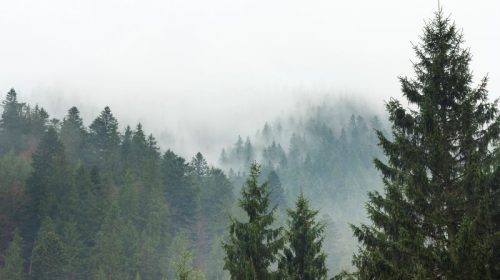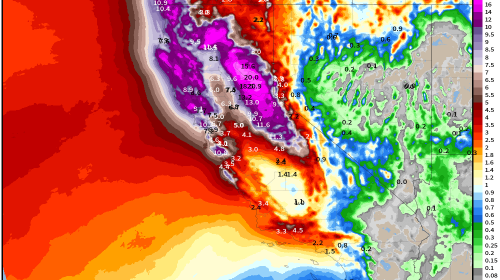SLV Water: Rate Increases on the Horizon
By Bob Fultz
The San Lorenzo Valley Water District (SLVWD) has started the process to raise rates, ultimately leading to a community vote. I’m a member of the SLVWD Board of Directors but speaking only for myself.
Our community has a dual role with respect to District operations and governance. We are customers purchasing water from the District. But we are also co-owners governing the District by voting on rates and electing the Board of Directors. Therefore, we must think and act like owners—which means carefully considering if any proposed rate increases meet the best long-term interests of the community and our water infrastructure. Historically, in my opinion, the Board and District have fallen short and our community must work together to ensure a better outcome this time.
The last two rate increases (2013 and 2017) were sold to you emphasizing rebuilding infrastructure and reserves—as you can see here: https://www.slvwd.com/sites/g/files/vyhlif1176/f/uploads/slvwd_rate_increase_decision_press_rls_10_25_13_final.pdf and here: https://www.slvwd.com/sites/g/files/vyhlif1176/f/uploads/rate_increase_approval_press_rls_9.22.17.pdf. These were admirable goals and most likely why our community ultimately did not vote against those increases, though in 2017 about 30% of our community voted No. Had a substantial majority of the funds collected from those two rate increases been spent on infrastructure and maintenance, that would have been a good outcome—fixing decades of neglect. Unfortunately, over 2/3 of the increase in top-line revenue went towards expenses to operate the system—not to infrastructure or deferred maintenance.
The numbers are sobering. During the period covered by the last two rate increases (covering 1/1/2014 through 11/1/2022), inflation increased 27%. But the average (4 units) water bill increased by 140%. And operating costs increased 76% or 2.9 times inflation. These skyrocketing costs to operate the system might be sustainable and justifiable IF the District could quantify the benefits we received for those increased operating costs. But the District and Board have not delivered that information. Further, from fiscal years 1997 through 2022, operating costs increased at 3.4 times inflation. Had operating expenses increased at only 1.75 times inflation, due to the power of compounding, our community would have had more than $35 million to: (a) eliminate the current pension liability; (b) maintain all of our steel tanks (which have not been maintained); (c) install $15 million of infrastructure projects; and (d) provide a bit of rate relief. This would have been fiscally responsible—focusing on the long-term health of our District.
(Note: The District had a spike in operating costs in late 2020 through mid 2021 in the wake of the CZU fire, which I excluded in the calculations above. To be clear, operating costs were skyrocketing before the CZU fire.)
Due to recent spikes in inflation, I think we all recognize that some rate increase is needed. But, as a community, we have the power, through the upcoming vote, to ensure that the money is spent on the critical repair and improvement of our infrastructure.
You will hear from those who don’t want you to focus on this issue, who will tell you not to worry—that through grants we will have all the money we need to fix our infrastructure. This is flawed and wishful thinking. Grant money is not reliable—it comes and goes. It’s been good the last few years. But it’s also tapering off as federal and state budgets get squeezed. Grant money must be treated as a bonus on top of the real plan to improve our infrastructure. It should not be a replacement for a sustained plan—any more than FEMA money in the wake of a disaster is a replacement for a real plan. The hard reality is that we have to rescue ourselves—no one else will. And that means the following:
If the rate increase proposal isn’t accompanied by a 5-year committed budget with a decrease in the rate of growth in operating costs; if the proposal doesn’t commit at least 2/3 of the increase towards infrastructure and building our reserves for the next natural disaster; if the language in the ballot leaves the District or Board any wiggle room to redirect funds from that committed 5-year budget to additional operating expenses except in the event of a declared disaster—then you need to vote No. Our community needs to send a clear message to the Board that its priority is infrastructure. That we intend to fulfill the inter-generational contract by delivering an asset to the generations that follow us—not a liability as a result of decades of underfunding infrastructure.
The voting process, under Proposition 218, is different in that it is a backwards vote. You don’t get to vote FOR the rate increase, you can only vote AGAINST. The process relies on public inattention because unless a 50%+1 majority votes No, the rate increase passes. And not voting is the same as voting Yes. I agree that this is a total inversion of our system of government, but this process was approved by California voters in 1996 as a constitutional amendment. Therefore, we need to recognize the rules of engagement and act accordingly. Voting No on an ill-defined or vague plan tells the Board to do better, which is showing your support for a fiscally sound and infrastructure-focused District.
The District will soon announce public meetings to gather input from the community on the proposed rate increase and process. Contrary to opinions expressed by others, your participation in these civic discussions—asking questions and advocating for complete transparency regarding the District’s true financial position—represents the beauty of our system of government, especially at the local level.
Please attend these meetings in person or via Zoom or write letters to make your voices heard—as co-owners of the District and on behalf of those who come after us who will either benefit or be harmed by the decisions we make today.
Bob Fultz is a member of the San Lorenzo Valley Water District Board of Directors. He is a resident of Boulder Creek and CEO at Range Networks.
Have something to contribute? The San Lorenzo Valley Post welcomes your Santa Cruz Mountains news, story ideas, photos, and letters. Send us an email.
The San Lorenzo Valley Post is your essential guide to life in the Santa Cruz Mountains. We're dedicated to delivering the latest news, events, and stories that matter to our community. From local government to schools, from environmental issues to the arts, we're committed to providing comprehensive and unbiased coverage. We believe in the power of community journalism and strive to be a platform for diverse voices.





